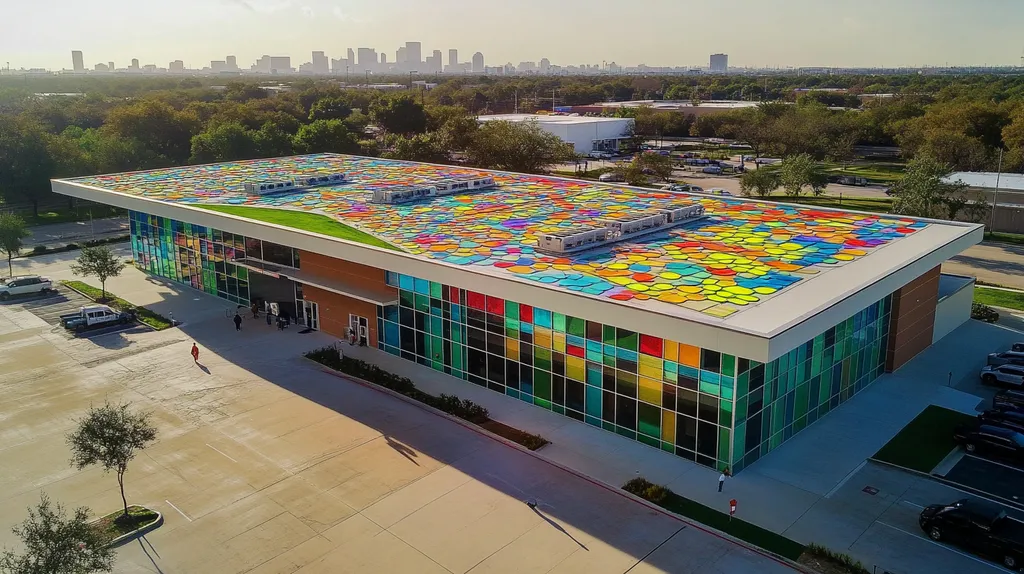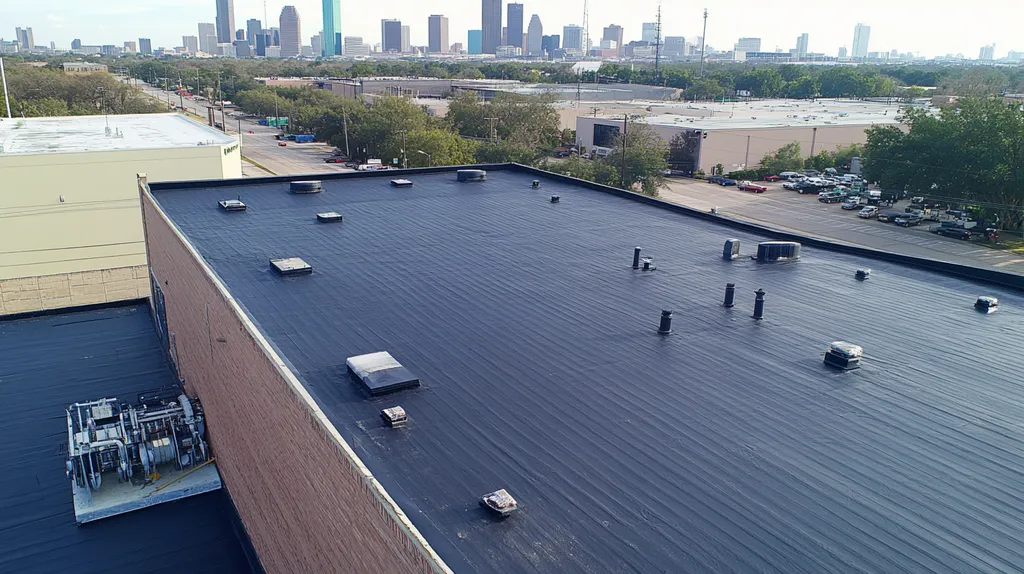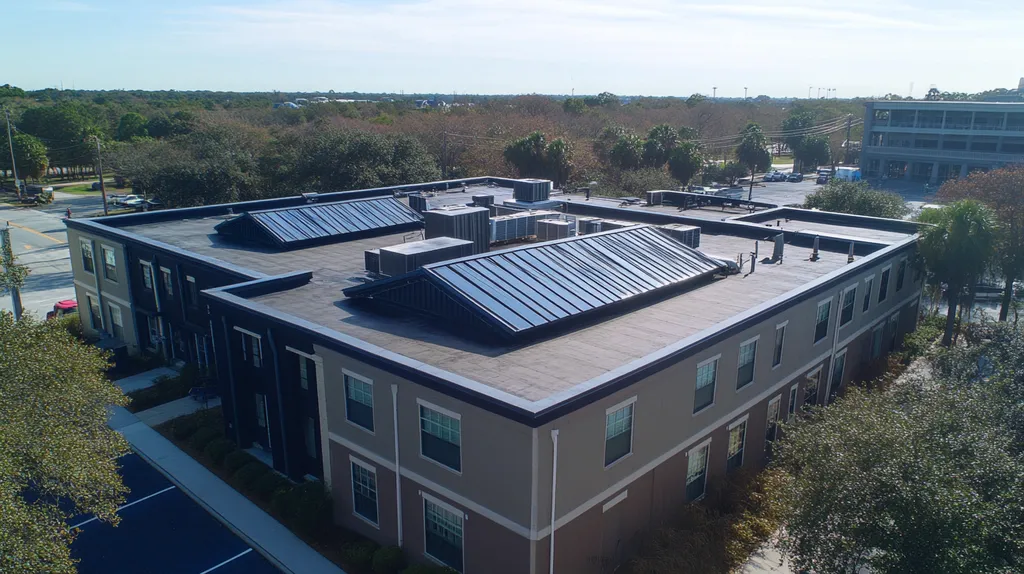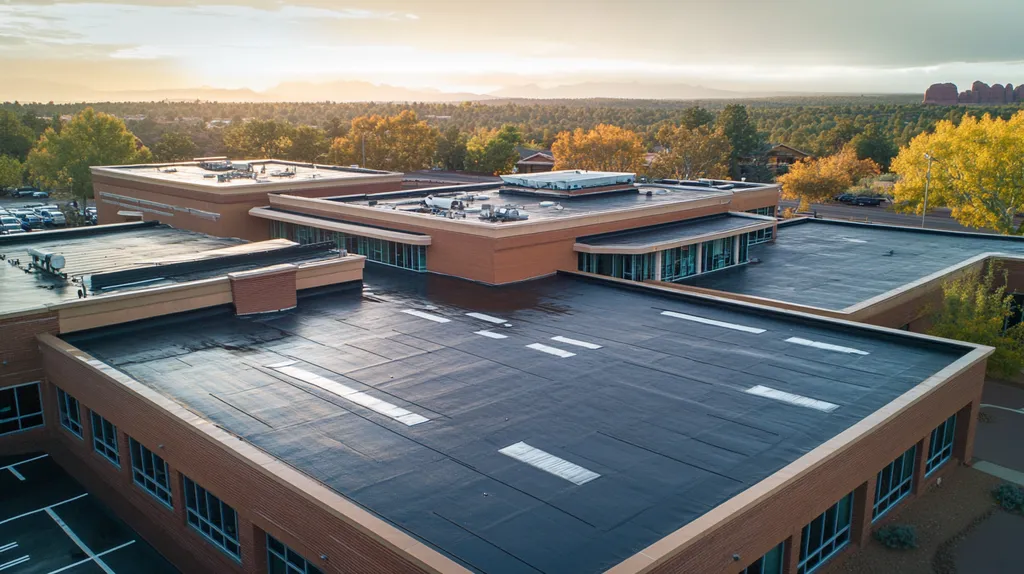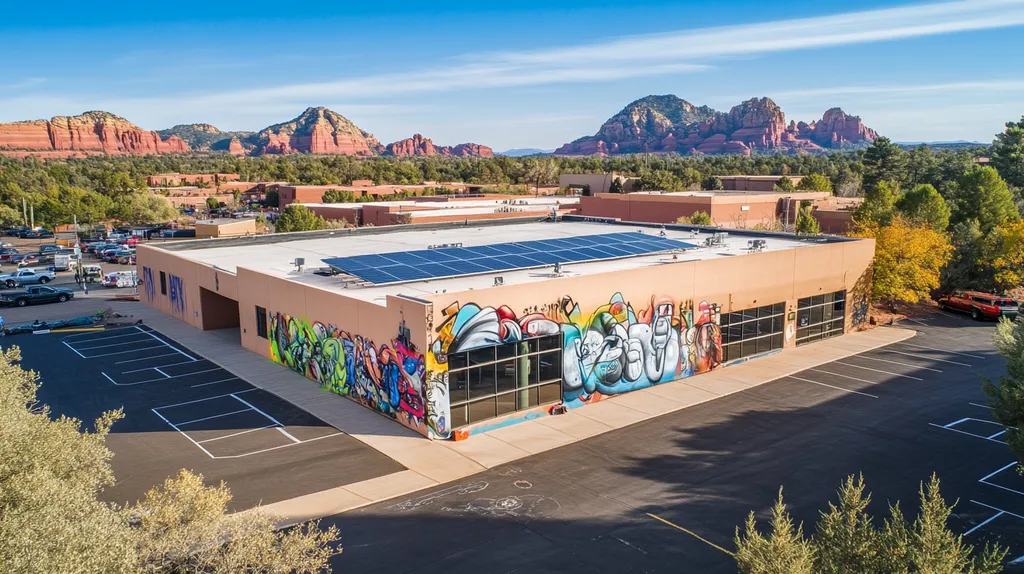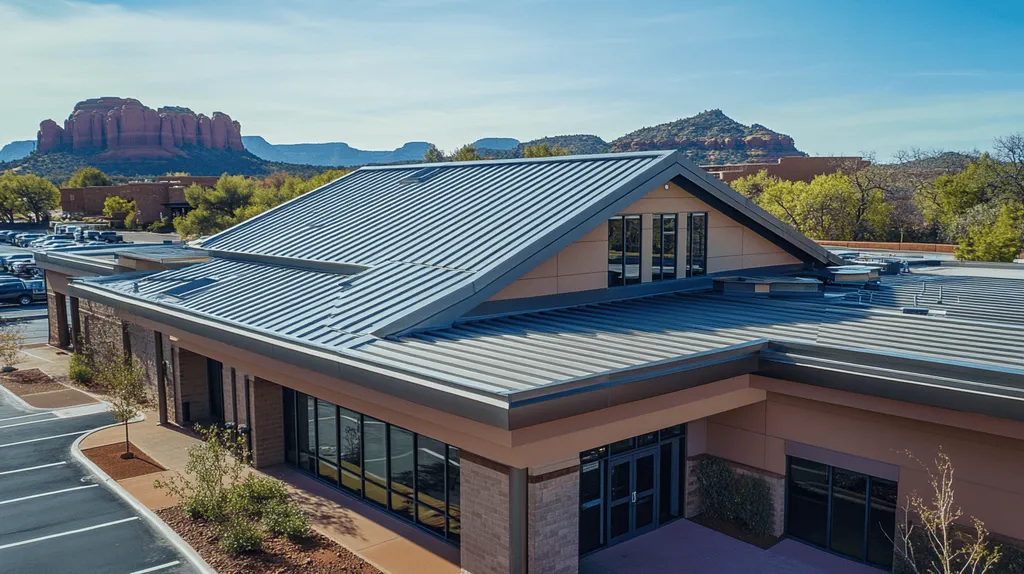Welcome to today’s Battle Royale featuring two roofing heavyweights: “Homeowner Reviews” in the east corner versus “Contractor References” in the west!
Tonight’s showdown pits these contenders against each other across six punishing rounds designed to test every aspect of their performance for Roof Contractor Feedback.
At stake? Millions in potential costs, decades of building protection, and the critical performance demands of modern commercial and industrial facilities.
Our professional judging panel will evaluate each round on technical merit, real-world performance, and value delivery. After all six rounds, we’ll declare our ultimate champion.
Ladies and gentlemen, facility managers and building owners… it’s time to rumble!
ROUND 1: INITIAL COSTS & INSTALLATION
When evaluating roofing contractors, the stakes couldn’t be higher for property owners and facility managers. A single misstep in contractor selection can lead to budget overruns, extended downtimes, and compromised building protection. The difference between homeowner reviews and contractor references becomes particularly crucial when examining three critical aspects: material costs, installation complexities, and project scheduling.
Material Expenses
Material selection directly impacts both initial costs and long-term performance of commercial roofing systems. Customer reviews often focus heavily on final pricing without context for material quality or appropriateness for specific building requirements.
Homeowner reviews typically highlight cost complaints or savings, but rarely address whether materials meet building codes or warranty requirements. This limited perspective can lead property managers to make decisions based on price alone, potentially overlooking crucial performance factors.
Contractor references, however, provide detailed insights into material selections based on building-specific needs. They can explain why certain materials cost more and how these choices affect long-term performance and maintenance requirements.
Customer reviews and testimonials play an important role in contractor evaluation, but must be balanced with professional expertise for material decisions. (source: Holladay Grace)
Installation Complexity
Installation challenges can significantly impact project success, yet they’re often invisible to the untrained eye. Complex factors like substrate condition, drainage requirements, and mechanical system integration require professional evaluation.
Homeowner reviews rarely capture these technical nuances, instead focusing on visible aspects like crew behavior and cleanup. While these factors matter, they don’t address critical installation requirements that affect system performance.
Contractor references excel at detailing past projects with similar complexity levels. They provide concrete examples of how specific challenges were overcome and what measures were taken to ensure proper installation.
In this category, contractor references clearly demonstrate superior value by offering insights into technical requirements and solution strategies.
Project Timeline
Accurate project scheduling is essential for minimizing business disruption and coordinating with other building operations. Timeline estimates must account for material delivery, weather conditions, and potential complications.
Homeowner reviews often emphasize whether projects finished on time but rarely provide context about initial timeline estimates or reasons for delays. This limited perspective can create unrealistic expectations about project duration.
Contractor references offer detailed scheduling insights based on similar projects. They can provide realistic timelines that account for seasonal factors, material availability, and common delay sources.
When evaluating timeline reliability, contractor references demonstrate clear advantages through their ability to provide contextual scheduling information.
ROUND 1 WINNER: CONTRACTOR REFERENCES
ROUND 2: DURABILITY & LIFESPAN
When it comes to commercial roofing, durability and lifespan directly impact the bottom line. Industry data shows that premature roof failures can cost facility owners up to $8 per square foot in emergency repairs and business disruption. The stakes are particularly high for industrial properties, where a failing roof can compromise millions in equipment and inventory.
Assessing Material Durability
Material durability determines not just how long a roof will last, but how well it performs under specific environmental stresses. From UV exposure to chemical emissions, commercial roofs face challenges that residential installations rarely encounter.
Homeowner reviews typically focus on short-term performance and aesthetic concerns. While these insights can flag obvious issues, they rarely address how materials hold up against industrial-specific challenges like equipment vibration or chemical exposure.
Contractor references provide detailed performance data across multiple building types and environmental conditions. They can demonstrate how specific materials perform in similar facilities and outline expected degradation patterns over time.
For material durability assessment, contractor references show a clear ADVANTAGE through their ability to provide industry-specific performance data.
Real-World Performance
Understanding how roofing systems perform in actual commercial environments requires long-term observation and technical expertise. Factors like thermal cycling, structural movement, and mechanical system interactions all impact roof longevity.
Homeowner reviews often highlight dramatic failures but miss subtle signs of deterioration. Their perspective is limited to visible issues, potentially overlooking early warning signs that professionals would catch.
Contractor references include documented case studies showing performance across multiple seasons and years. They can point to specific installations that have withstood similar conditions and explain why certain systems succeeded while others failed.
Given the depth of technical insight available, contractor references hold the ADVANTAGE in evaluating real-world performance.
Maintenance Requirements
Proper maintenance can double or triple a commercial roof’s effective lifespan. Understanding these requirements before installation helps facility managers plan resources and budgets effectively.
Homeowner reviews rarely address maintenance schedules or preventive care requirements. When maintenance is mentioned, it’s usually in response to problems rather than as part of a planned strategy.
Contractor references outline specific maintenance protocols based on material type and installation configuration. They provide concrete examples of how proper maintenance has extended roof life in similar facilities.
For maintenance insights, contractor references demonstrate a clear ADVANTAGE through their focus on preventive care and long-term performance.
ROUND 2 WINNER: CONTRACTOR REFERENCES
ROUND 3: PERFORMANCE FACTORS
Performance factors in commercial roofing directly impact both short-term operations and long-term building value. Industry data shows that up to 40% of commercial roof failures stem from poor contractor performance rather than material defects. Understanding how different types of feedback predict contractor performance can mean the difference between a roof that lasts decades and one that requires premature replacement.
Quality of Workmanship
Workmanship quality determines how well a roofing system performs throughout its service life. Even minor installation errors can lead to significant issues, from localized leaks to catastrophic system failure. Property managers need reliable indicators of a contractor’s actual capabilities, not just their best work.
Homeowner reviews tend to focus on visible quality indicators like seam alignment, flashing details, and overall finished appearance. While these observations may seem superficial, they often reveal consistent patterns in a contractor’s attention to detail and standard practices.
Contractor references typically highlight technically complex projects with extensive quality control measures. However, these carefully selected examples may not represent the contractor’s typical performance level across all projects.
When evaluating workmanship quality, contractor references demonstrate an ADVANTAGE through their ability to document specific technical requirements and quality control processes.
Problem Resolution
How contractors handle inevitable challenges reveals much about their professionalism and commitment to customer satisfaction. The true measure of performance often lies not in preventing all problems, but in responding effectively when issues arise.
Homeowner reviews excel at documenting real-world problem resolution scenarios. They provide unvarnished accounts of how contractors respond to warranty claims, address unexpected issues, and handle customer concerns.
Contractor references rarely address problem resolution in detail, focusing instead on successful outcomes. When challenges are mentioned, the description often lacks specificity about resolution timeframes or customer satisfaction.
For insight into problem resolution capabilities, homeowner reviews show a clear ADVANTAGE through their transparent documentation of actual issues and outcomes.
System Integration
Modern commercial roofs must integrate seamlessly with multiple building systems, from HVAC units to solar installations. Poor integration can compromise both roof performance and the efficiency of connected systems.
Homeowner reviews typically lack the technical depth to evaluate system integration success. While they may note obvious issues like leaks around penetrations, they rarely address complex integration challenges.
Contractor references provide detailed documentation of integration strategies and outcomes across various system types. They can demonstrate successful coordination with other trades and compliance with manufacturer requirements.
In assessing system integration capabilities, contractor references maintain a clear ADVANTAGE through their focus on technical documentation and cross-system compatibility.
ROUND 3 WINNER: CONTRACTOR REFERENCES
ROUND 4: MAINTENANCE REQUIREMENTS
Effective maintenance can extend a commercial roof’s lifespan by up to 50%, yet studies show that over 80% of roof failures stem from inadequate maintenance practices. For facility managers, understanding maintenance requirements through contractor feedback represents a critical decision point that impacts both short-term operations and long-term building value.
Preventive Maintenance Programs
Regular preventive maintenance programs form the backbone of commercial roof longevity. These structured approaches require careful planning, consistent execution, and detailed documentation to protect roofing investments effectively.
Homeowner reviews typically focus on reactive maintenance experiences, highlighting emergency repairs and unexpected issues. While these insights reveal contractor responsiveness, they rarely address the effectiveness of planned maintenance strategies.
Contractor references excel at documenting comprehensive maintenance programs, including inspection schedules, preventive repairs, and long-term care strategies. They demonstrate proven approaches that extend roof life through systematic care.
For preventive maintenance insights, contractor references show a clear ADVANTAGE through their focus on structured, proactive care protocols.
Documentation and Reporting
Proper maintenance documentation helps facility managers track system performance and justify budget allocations. Detailed records of inspections, repairs, and modifications protect warranty coverage and support capital planning.
Homeowner reviews rarely address documentation quality or reporting practices. When mentioned, these aspects typically focus on billing clarity rather than technical documentation.
Contractor references provide examples of detailed maintenance records, including inspection reports, repair documentation, and performance tracking. These materials demonstrate professional documentation practices essential for facility management.
In evaluating documentation capabilities, contractor references maintain an ADVANTAGE through their emphasis on comprehensive record-keeping.
Staff Training and Support
Successful maintenance programs require knowledgeable staff and ongoing support from roofing professionals. The ability to identify potential issues early and respond appropriately depends heavily on training quality.
Homeowner reviews often mention interactions with maintenance staff but rarely assess their technical capabilities. These observations tend to focus on communication skills rather than technical proficiency.
Contractor references showcase staff certification levels, training programs, and continuing education initiatives. They demonstrate commitment to maintaining qualified personnel who understand current best practices.
When evaluating staff capabilities, contractor references show an ADVANTAGE through their focus on professional development and technical expertise.
ROUND 4 WINNER: Contractor References
ROUND 5: SUSTAINABILITY CREDENTIALS
Sustainability has become a critical factor in commercial roofing decisions, with direct impacts on both environmental responsibility and bottom-line performance. Modern facility managers face increasing pressure to demonstrate measurable sustainability outcomes while balancing cost considerations against long-term environmental benefits.
Roofing represents one of the largest sustainability investments a property can make, with costs ranging from $12,550 to $47,000 for a single project. This significant variation makes selecting contractors with verified sustainability credentials especially crucial. (source: Bay Area Consumers’ Checkbook)
Environmental Certification Verification
Third-party environmental certifications provide crucial validation of sustainable roofing practices. These credentials encompass material sourcing, installation methods, and waste management protocols that impact a project’s overall environmental footprint.
Homeowner reviews rarely address specific environmental certifications or standards compliance. When sustainability is mentioned, it typically focuses on observable features like solar readiness or reflective materials rather than verified credentials.
Contractor references excel at documenting specific environmental certifications, training programs, and verified sustainable practices. They provide concrete evidence of compliance with recognized standards and ongoing commitment to environmental stewardship.
For certification verification, contractor references demonstrate a clear ADVANTAGE through their focus on documented credentials and compliance history.
Energy Performance Metrics
Measurable energy performance outcomes directly impact both environmental benefits and operational costs. Proper documentation of these metrics helps facility managers justify sustainable roofing investments.
Homeowner reviews often include anecdotal evidence about energy savings but rarely provide verified performance data. While these experiences offer valuable real-world perspective, they lack the technical depth needed for commercial decision-making.
Contractor references typically include detailed energy performance data from similar installations. They can demonstrate specific metrics like reduced cooling loads, improved thermal efficiency, and documented utility savings.
When evaluating energy performance documentation, contractor references maintain an ADVANTAGE through their ability to provide verified metrics and comparative analysis.
Sustainable Material Management
Proper material selection and waste management significantly impact a roofing project’s environmental footprint. These decisions affect both immediate installation impact and long-term environmental performance.
Homeowner reviews sometimes mention recycled content or eco-friendly materials but rarely address comprehensive material management strategies. Their perspective tends to focus on marketed features rather than verified sustainability practices.
Contractor references document specific material sourcing, recycling protocols, and waste reduction strategies. They can demonstrate systematic approaches to sustainable material management across multiple projects.
For sustainable material practices, contractor references show an ADVANTAGE through their comprehensive documentation of material management strategies.
ROUND 5 WINNER: Contractor References
ROUND 6: SPECIALIZED APPLICATIONS
Specialized commercial roofing applications represent some of the most challenging and high-stakes projects in the industry. From food processing facilities requiring specific sanitation protocols to data centers demanding perfect moisture control, these projects leave zero room for error. A single misstep in contractor selection can lead to millions in damages and operational disruptions.
Technical Expertise Validation
Specialized roofing applications demand contractors with verified expertise in specific areas like clean room environments, chemical resistance, or extreme temperature conditions. These projects require proven experience with unique materials, installation methods, and quality control protocols.
Homeowner reviews rarely address technical specialization beyond basic competency. When specialized requirements are mentioned, the assessment typically lacks the depth needed to evaluate true expertise.
Contractor references excel at documenting specialized experience through detailed project histories and technical specifications. They provide concrete evidence of successful implementations under similar specialized conditions.
For technical expertise validation, contractor references demonstrate a clear ADVANTAGE through their ability to verify specialized capabilities.
Regulatory Compliance
Many specialized applications must meet strict regulatory requirements, from FDA standards in food processing to EPA guidelines for chemical containment. Understanding how contractors navigate these complex compliance issues is crucial for project success.
Homeowner reviews seldom address regulatory compliance beyond basic building codes. When regulations are mentioned, the discussion typically focuses on permits rather than industry-specific requirements.
Contractor references provide detailed documentation of compliance history and certification maintenance. They demonstrate systematic approaches to meeting specialized regulatory demands across multiple projects.
In assessing regulatory compliance capabilities, contractor references maintain an ADVANTAGE through their focus on documented compliance history.
Performance Testing
Specialized roofing applications often require specific performance testing to verify system integrity. From air pressure differential testing in clean rooms to chemical resistance verification in industrial settings, these requirements demand specialized knowledge and equipment.
Homeowner reviews rarely mention performance testing beyond basic leak checks. When testing is discussed, it typically lacks the technical detail needed for specialized applications.
Contractor references document comprehensive testing protocols and verification procedures. They demonstrate systematic approaches to ensuring specialized performance requirements are met and maintained.
For performance testing validation, contractor references show a clear ADVANTAGE through their detailed documentation of testing protocols.
ROUND 6 WINNER: CONTRACTOR REFERENCES
AND THE WINNER IS…
After six grueling rounds of technical evaluation, we have our verdict…
In a decisive victory, CONTRACTOR REFERENCES claims the championship belt with a clean sweep across all six rounds! This heavyweight contender dominated through superior technical documentation, specialized expertise validation, and comprehensive performance metrics.
The champion’s knockout punches came from its unmatched ability to verify sustainability credentials, document maintenance protocols, and validate specialized application expertise. For commercial and industrial properties where millions in assets hang in the balance, contractor references proved themselves the undisputed champion of risk management.
But don’t count homeowner reviews out completely! In situations involving smaller commercial properties or when evaluating contractor communication and customer service, this scrappy contender still packs a valuable punch.
Remember, folks: Every building represents a unique matchup. Local conditions, property characteristics, and specific facility requirements can shift the odds. While tonight’s bout provides valuable insights, property owners should always consult qualified professionals who can evaluate their specific situation before making the final call.
Ladies and gentlemen, in the high-stakes arena of commercial roofing, victory goes to those who match their facility’s specific requirements with the right contender’s proven strengths. Choose wisely – your building’s future depends on it!
FREQUENTLY ASKED QUESTIONS
Q. What costs should I consider for a commercial roof?
A. When considering costs for a commercial roof, evaluate material prices, installation expenses, and potential project delays. It’s essential to understand how each factor contributes to the overall budget. Relying solely on homeowner reviews may overlook critical details that impact long-term performance and durability.
Q. How do I assess the durability of an industrial roof?
A. To assess the durability of an industrial roof, consider material specifications, performance data under stress, and local environmental factors. Homeowner insights often miss critical details about how materials handle long-term use. Contractor references typically provide the necessary detailed performance history for informed decision-making.
Q. What should I know about contractor performance for commercial roofs?
A. Assessing contractor performance involves understanding their workmanship quality, problem resolution strategies, and project integration capabilities. Homeowner reviews can highlight experiences but may not capture the complete picture. Contractor references supply vital documentation showcasing past successes, enhancing your trust in their abilities.
Q. How often should I maintain my commercial roof?
A. Regular maintenance is essential for extending a commercial roof’s lifespan. Most experts recommend scheduled inspections at least twice a year, along with after severe weather. Homeowner discussions often focus on urgent repairs but may overlook the benefits of structured preventive care, which contractor references can better outline.
Q. What role do sustainability credentials play in roofing choices?
A. Sustainability credentials can determine the environmental and economic impact of your roofing choices. Look for verified certifications that highlight manufacturers’ commitment to environmentally friendly practices. While homeowner input may mention green features, contractor references provide reliable documentation of compliance and effectiveness in sustainability initiatives.
Q. When should I consider specialized roofing applications?
A. Specialized roofing applications are essential when dealing with unique environments, such as data centers or food processing facilities. These projects require contractors with specific expertise. Homeowner reviews may not address necessary technical capabilities, but contractor references will clarify the expertise needed for successful project completion.
Q. What should I know about equipment and material storage for roofing projects?
A. Equipment and materials for roofing projects must be stored properly to avoid damage or deterioration before installation. Ensure your contractor discusses their storage protocols, especially for sensitive materials. While homeowner reviews might touch on project readiness, contractor references will provide a detailed approach to material management and protection.

